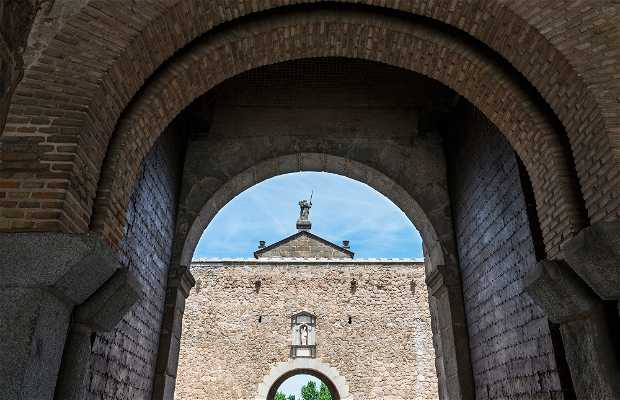Symbol of the Power of the Emperor
Toledo is one of the most visited cities by tourists, not only because of its important patrimony but also because of how well preserved it is.
In other places of many other cities there are semi demolished remains of the main entrance of the wall, but in Toledo, the entrance and the walls are perfectly preserved. Impressive. It is also impressive when you arrive in Toledo and encounter the Gate of Bisagra.
In front of it lies a complicated roundabout with a lot of traffic and it is not allowed to pass underneath it. It is recommended to park at the left where there is a free and secure parking lot. On the right side there is a park with the Tourist Office. If you pass in front of the gate towards the left you can go up to the highest point of Toledo, behind the Alcázar. If you go to the right you can walk along the wall and the escalators will also take you to the highest part but to the Jewish neighborhood.
One used to be able to go up to the center and the Zocodover square. I remember having gone up by car this way, but now they have chained the entrance and cars cannot pass anymore.
Its current name comes from the Muslim name “Bab-Shagra” that means “gate of the Sagra”. The gate is not medieval in the strict sense of the word. Its current appearance comes from the 16th Century when Toledo came to be the residence of Charles V and the Muslim entrance was remodeled. It has the shape of a small castle with an arched entrance protected by two towers, a parade ground and a second section that closes the entrance from inside. This second part, the least visible one, preserves original Muslim elements; the rest is renaissance style.
It was designed by Toledo’s own Alonso Covarrubias. It is decorated with the emperor’s symbol, the two-headed eagle and with two images of kings in the towers as symbols of earth’s judges. The exterior towers are semicircular and the interior ones are squared with tiled spires that form the coat of arms of Charles V.
I was surprised that the portholes, from where you supposedly attack the enemy, are quite low, almost at ground level. This means that the Gate of Bisagra was not built to defend Toledo but as a symbol of the power of the emperor. We normally just take pictures of the exterior, but you can also visit the interior.
In Paseo de Recaredo you find the roundabout Glorieta de la Reconquista, which used to be the main entrance to Toledo in ancient times. Until Charles V decided to build a New Gate of Bisagra, a bigger and more impressive one, this Gate of Alfonso VI was the main entrance.
It gives way to the Jewish and Muslim neighborhoods that are currently next to the new city that the Christians remodeled. As a gate it is quite intact, and it has a façade with three horseshoe arches. It is a pedestrian area because it gives way to a series of intricate and steep streets.
Since it is next to an escalator, it is a good option to visit the medieval Toledo. Moreover, the gardens are in a good condition and there is plaque on the floor with a touristic map of the city.










